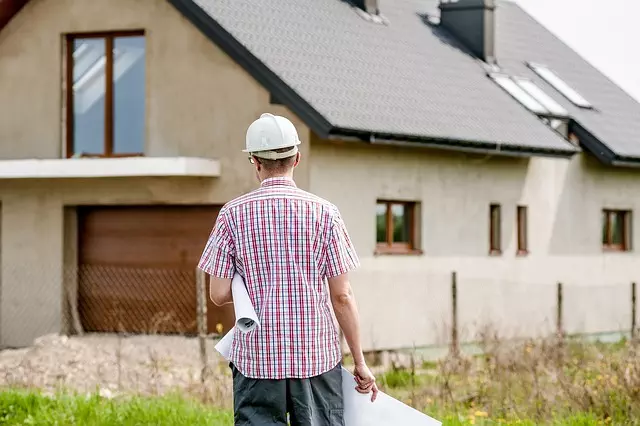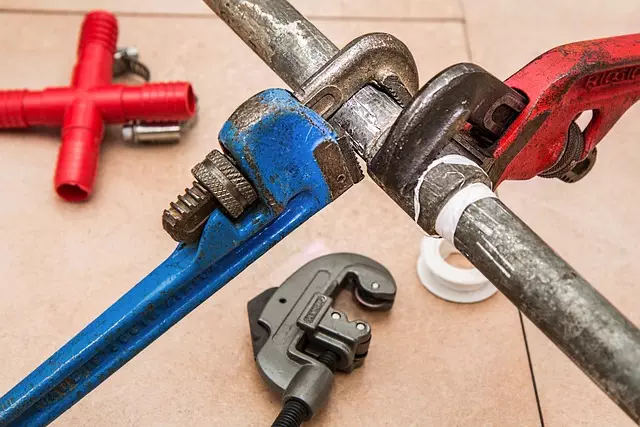Homeowners aiming to improve their home's energy efficiency should focus on upgrading their windows as part of a strategic home repair and maintenance plan. Inefficient windows can lead to higher heating and cooling costs due to drafts and poor insulation. Recognizing signs such as condensation between panes, leaks or drafts, and hard-to-operate windows is crucial for maintaining home comfort and preventing conditioned air from escaping. Advanced window technologies now offer significant energy savings through innovations like high-performance glazing, argon gas fills, and durable materials such as vinyl or fiberglass. Replacing old windows with these modern models not only enhances the home's aesthetic appeal but also promotes a more comfortable living environment and supports sustainable living. When replacing windows, precise measurements and careful handling are essential for both the new units and the window openings to ensure optimal performance and longevity. Proper installation includes repairing the opening, ensuring effective insulation and weather stripping for enhanced energy efficiency. The final product should provide a seamless fit, airtight seals, and flawless operation, resulting in substantial improvements in home comfort and energy savings as part of a comprehensive home repair and maintenance routine. This investment not only elevates the property's value but also contributes to a more sustainable lifestyle.
Homeowners seeking to enhance their residence’s energy efficiency and aesthetic appeal may consider window replacement as a pivotal step. This article delves into the critical role of windows in home repair and maintenance, offering insights on when and how to replace them effectively. We explore the necessity of window upgrades for improved home efficiency and provide a comprehensive guide to professional window installation tailored for residential properties. By understanding these factors, you can make informed decisions that contribute to a more comfortable and energy-efficient living space.
- Assessing the Necessity of Window Replacement for Home Efficiency
- Step-by-Step Guide to Professional Window Installation in Residential Properties
Assessing the Necessity of Window Replacement for Home Efficiency

When considering home repair and maintenance, the efficiency of your windows is a critical factor that can significantly impact your home’s overall performance. Over time, windows may become drafty, difficult to operate, or lose their energy-efficient coatings, leading to increased heating and cooling costs. To determine if window replacement is necessary for enhancing home efficiency, homeowners should first assess the current state of their windows. Look for signs of wear such as condensation between panes, visible leaks or drafts, and windows that are hard to open or close. These issues can compromise insulation and allow conditioned air to escape, negating the intended thermal comfort within your home.
Moreover, advancements in window technology have introduced new materials and designs that offer superior energy efficiency compared to older models. High-performance glazing, argon gas fills, and improved frame materials like vinyl or fiberglass can drastically reduce heat transfer, making newer windows a worthwhile investment for long-term savings on utility bills. In the context of home repair and maintenance, replacing outdated or inefficient windows is not just about aesthetics; it’s a strategic upgrade that contributes to a more comfortable living environment and supports sustainable practices. By carefully evaluating the condition and performance of your windows, you can make an informed decision on whether window replacement will benefit your home’s efficiency.
Step-by-Step Guide to Professional Window Installation in Residential Properties

When considering window replacement and installation as part of home repair and maintenance, it’s crucial to approach the task methodically for optimal performance and longevity. Professional window installation in residential properties involves precise measurements and careful handling of both the windows and the opening in the structure. The process begins with the removal of the old window, which requires careful attention to detail to ensure that no damage occurs to either the existing frame or the new window during transit and removal. Next, the installation team assesses the condition of the window opening, making any necessary repairs to ensure a proper fit for the new unit. Proper insulation and weather stripping are then applied to enhance energy efficiency and comfort.
Once the opening is prepared, the new window is carefully set into place. It’s vital that each component, from the frame to the sash and the glass panes, is correctly aligned and secured. This step typically involves shimming and fastening the window with appropriate hardware, ensuring a sturdy and airtight seal. After installation, the team conducts a thorough inspection to verify that the new windows operate smoothly and without issues. Finally, any excess materials are cleaned up, leaving nothing behind but a well-installed window ready to provide years of service as part of regular home maintenance. By following these steps, homeowners can expect a seamless transition to energy-efficient windows that contribute to the comfort and value of their homes.
Homeowners seeking to enhance their living space’s efficiency and aesthetics should consider the benefits of window replacement and professional installation as key aspects of home repair and maintenance. By carefully evaluating the necessity of new windows, homeowners can improve energy efficiency, reduce utility costs, and ensure lasting comfort within their homes. A well-executed window installation by seasoned professionals is pivotal to reaping these advantages, ensuring a seamless integration with the home’s structure. This comprehensive guide serves as an invaluable resource for those looking to invest in their property’s longevity and performance, making it easier to navigate the process from assessment to completion.


